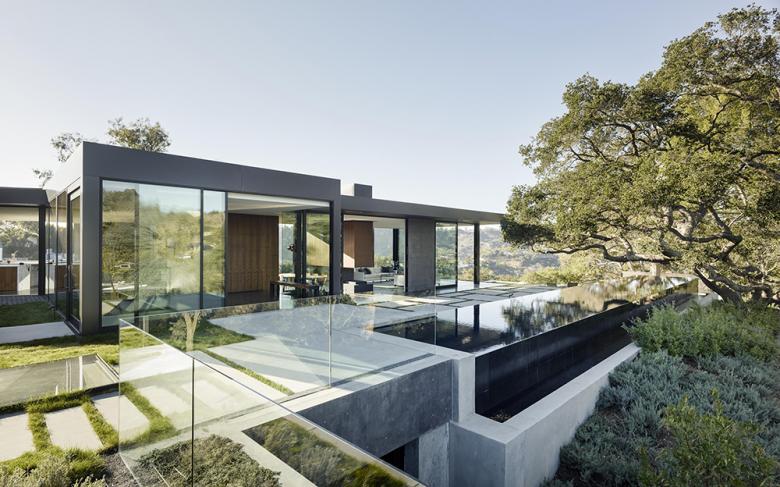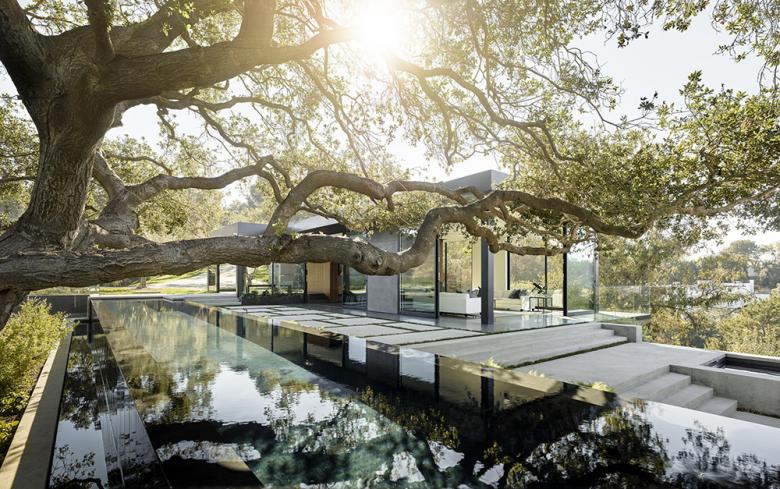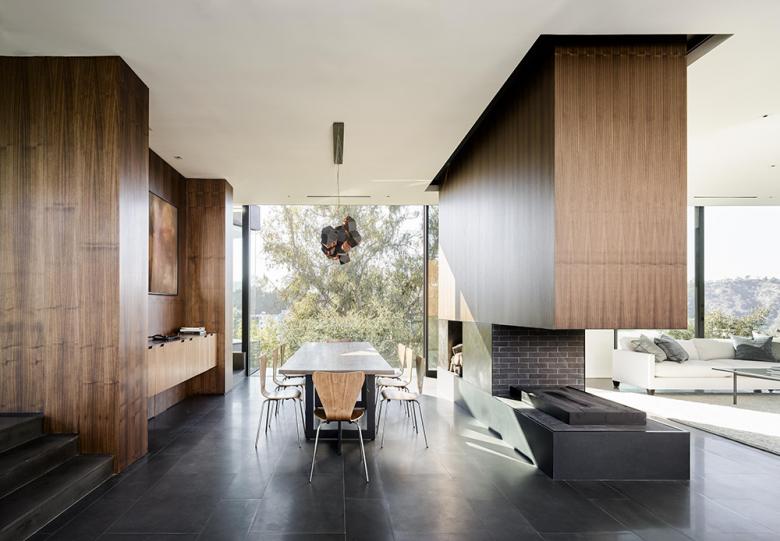Oak Pass Main House
15. février 2016
At first glance, this 8,000-square-foot house in Beverly Hills, California, does not appear to be nearly as large as its size indicates. This stems from the fact architect Noah Walker and his design-build Walker Workshop placed two-thirds of the house below-grade, in order to protect trees on the site and reduce the scale of the house, all the while maintaining views of its surroundings. The architect answered a few questions about the project.
What were the circumstances of receiving the commission for this project?
I met Nathan Frankel, the client, at a dinner party at his former house. At one point in the party he asked the group a riddle. I thought of the correct answer.
Please provide an overview of the project.
The main house is the second phase of a two-house development on a 3.5 acre hillside side in Beverly Hills. The main house is approximately 8,000 s.f. and consists of five bedrooms below a vegetated green roof, one lap pool and one swimming pool.
What are the main ideas and inspirations influencing the design of the building?
The characteristic of the site was the primary design driver for this project. The site runs along a ridge in a grove of Coast Live Oak trees (over 125 live Oaks on the parcel). There are strong views to the west, north, and east.
How does the design respond to the unique qualities of the site?
Topography and trees were critical. In California, the Coast Live Oak is protected and cannot be touched, so the houses had to be designed around them. I also understood that, given the natural beauty of the site, it would be important to make the relatively large house as diminutive as possible. To achieve this I placed 2/3 of the program below grade and much of it under a vegetated roof. Because the house is sited on a ridge, the lower level was still able to have commanding views and vistas from nearly every window. I wanted to showcase the view of one of the more majestic Oaks on the property so I placed the lap pool below the Oak so it would reflect the tree and placed a smaller section of the house alongside it as a pavilion. It was important on this site to make it feel like nature was coming first, and the house second.
How did the project change between the initial design stage and the completion of the building?

I tend to think of design as a spiraling process. In this case the initial concept was strong so the design was more a case of a series of progressive refinements. One of the last incorporated elements was the interior courtyard which came about as a means of bringing light and interest into the underground program. Its closed nature became a nice contrast to the openness to the views in all other parts of the house.
Was the project influenced by any trends in energy-conservation, construction, or design?

We were also the general contractor for the project so we oversaw the construction of the house. The construction took about two years to complete. A majority of the house is structural concrete. This allowed longer spans and bigger cantilevers plus it helps the house to feel psychologically like it is of the earth.
Email interview conducted by John Hill.
Site Plan (main house is at left)
Upper Floor Plan
Lower Floor Plan
Entry Elevation
Master Elevation
Pool Elevation
Oak Pass Main House
2015Beverly Hills, California
Client
Nathan Frankel

Architect
Walker Workshop Design Build
Los Angeles, California

Design Principal
Noah Walker

Project Team
Ted Leviss, Trent Laughton, Erin White

Structural Engineer
John Labib and Associates

Contractor/Construction Manager
Walker Workshop

Window and Doors
Fleetwood
Site Area
151,584 s.f.

Building Area
8,000 s.f.
Photographs
Joe Fletcher
Drawings
Walker Workshop
Articles liés
-
Spotlight on Italy
on 16/05/2018
-
Bologna Shoah Memorial
on 20/07/2015















